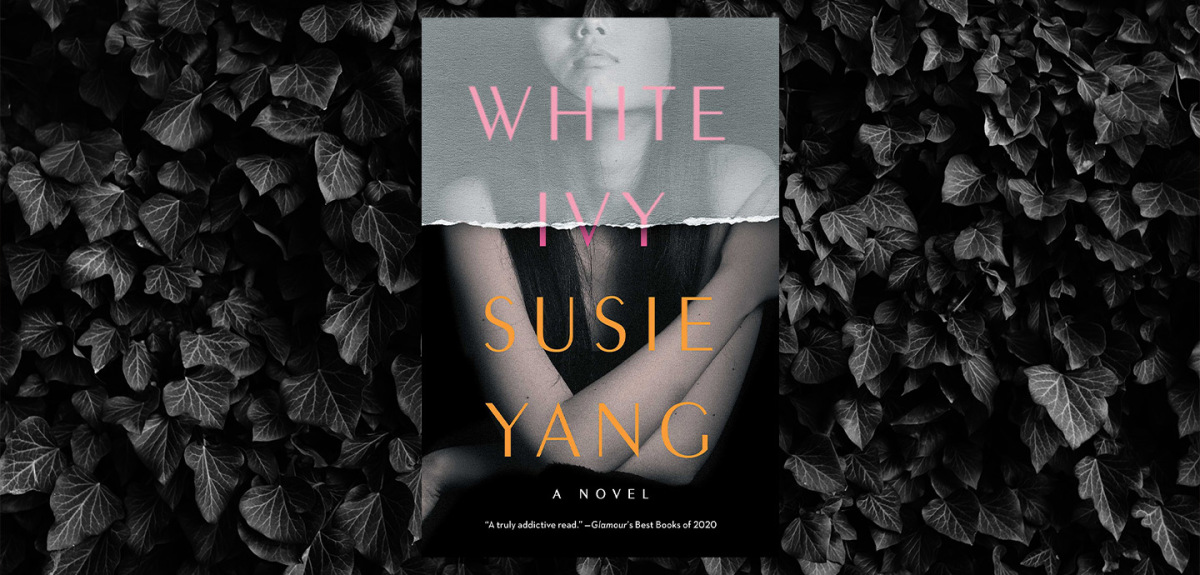[ad_1]
Susie Yang’s debut White Ivy is focused around issues of identity, belonging, and the inherent anxieties that accompany those who simultaneously seek to conform and hide. Where does an “average and nondescript” Chinese American girl belong in white America? In what form does racial prejudice make itself visible in a fractured modern world? Yang locates this discussion in a complex, multi-layered story. Ivy Lin is a young Chinese American woman who inherits some of her immigrant parents’ anxieties, and carries some of her own—she grows like a “wayward branch. Planted to the same root as her family but reaching for something beyond their grasp”.
The opening page begins with a confession, that Ivy Lin was a thief. “No one ever suspected—and that made her reckless.” We quickly learn that Ivy has a crush on her high-school classmate, Gideon Speyer—who later becomes her fiance—and their relationship is fraught with secrecy, doubts, and denial. Beside Gideon, Ivy also shares a romantic relationship with Roux Roman, a son of Romanian immigrants and Ivy’s neighbor.
The novel is made up of five unequal parts. The first two are fast-paced, and deal with Ivy’s school years, interspersed with details from her past. These parts tell us that Ivy is a “secretive child”, and a “precocious reader”. Beneath this is a darker story that is every bit intricate as it is absorbing. One of the defining moments in the first two parts of the novel is when Ivy sneaks out to Gideon’s house where she learns of his white upper-class family, whose bourgeois aesthetics lures Ivy further. Though still occupying only the peripheries of Gideon’s life at this point, she begins to gather details of Gideon’s life—“to thumb over later”. However, it is not until much later that we understand the obsession that Ivy builds around Gideon that ultimately becomes her undoing. There are moments—towards the end, especially—where the novel feels a little forced; but these are minor grievances, and they do not linger as much as the rest of what makes up White Ivy.
Part three—the longest part—introduces us to an adult Ivy, an Ivy no longer living with her parents, an Ivy who is—in her opinion—free. From here onward, White Ivy feels like a different novel—both in style and substance. These latter parts are slower and more reflective. With every page, Yang sharpens Ivy, whittling intricate details of her struggle to belong, even as she compartmentalizes, pushing undesirable parts of herself into pockets. Ivy’s relationships with Roux and Gideon—the former in private, concealed to the rest of the world; the other in public, yet not fully open to Ivy—behave like mirror images. While Gideon symbolizes the specific whiteness that Ivy aspires towards, it is Roux that Ivy is most vulnerable with. With Gideon, Ivy is restrained. His thoughts are as closed to her as they are to us. Roux, on the other hand, is more unbridled. He is showy and extravagant in his displays of affection. It is in these contrasting spaces that we see what—and how much—Ivy conceals. These contradictions generate anxieties, and a quiet violence that chafes at Ivy’s core.
While White Ivy succeeds in making us uncomfortable, Yang is very careful about the political undercurrents of the novel like Ivy’s internalized racism or the kind of stereotypes that are placed on Asian Americans. Careful but not silent—she teases these discussions by placing them in very subtle spaces like when Ivy’s mother—Nan—claims they are different from Roux’s family because “Baba has a master’s degree”. But the novel never feels instructive or moralistic. It does not seek to console. Its characters do not concern themselves with being good. At one point in the novel, Ivy wants to dye her hair blonde, and the hairdresser warns her that if done hastily, the process could fry her hair, but Ivy simply says, “do it”. Though her unrelenting desire to be accepted feels unusual and too dark at times, it is not entirely unimaginable.
Many at the margins proofread their bodies, clipping what they think will not be accepted—often splintering their very ideas of self. This fear of being rejected, of getting caught, haunts the novel and is most palpable in Ivy’s relationship with Gideon. Yang takes a character who is a confessed thief from the first page, and etches her with qualities that turn her into a complex, layered, and unpredictable character.

Fiction
White Ivy
By Susie Yang
Simon & Schuster
Published November 3rd, 2020
[ad_2]
Source link
